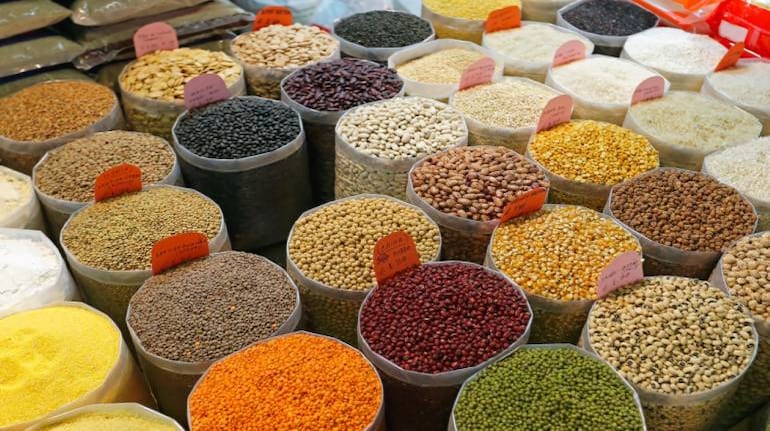



The cat is out of the bag, especially after the Reserve Bank of India in clear letters pointed to food inflation as a major reason for higher inflation.
But this is not the first time that food inflation has hit India. Recall 2015 when dal prices shot up. Arhar was being sold for over Rs 200/kg. Then again in 2016, food inflation was at an all time high. Onion to potatoes all prices were volatile and hence the government started the Operation Greens and the TOP (tomato, onion, potato) scheme for market stabilisation.
This scheme provided freight and storage subsidies so that a viable infrastructure can be built bolstering the supply chain for these vegetables. But soon after, in 2019, despite government supply measures prices of onions jumped to a 20-month high.
Constant Inflationary Pressures2020 was no different as food price inflation increased and added additional pressure on the inflation graph. In 2021 and 2022, food prices were wobbling due to dampened harvests and volatile prices from agri inputs to fuel. And finally our food economy took the biggest hit with the recent hyper food inflation in vegetables pushing prices of tomatoes beyond 200/kg and a sharp increase in other vegetables too.
Export bans, stockpiling limits and weekly food stock reporting all went against the farm law logic, yet have been used by the government to keep crop produce within the country to stabilise the food market. NAFED and other government agencies have also been used to release additional food stocks, yet prices refuse to stabilise or come down.
Recently, official statements from the food bureaucracy promised that onion prices will be 40/kg by January 2024. One hopes that the ministry is right but if not this game will have many losers including the farmers, consumers and the government, because these stakeholders aren’t getting fair prices, timely nutrition and a healthy citizenry.
Even from small traders to food exporters all are quietly suffering because of the government’s ever-changing food policies. What all these events signify is the government’s food policy and remedial measures are not working as desired. In fact, forces of food inflation backed by agrarian distress is overpowering our state planning. And one hopes that the government machinery realises that a trajectory change is required.
But should this inflationary pressure be used to remodel our food system? One hopes that the government does start shifting gears beginning by taking a step away from industrial agriculture towards regenerative agriculture. One or two states can’t take the burden of food production anymore. Erratic weather is tearing into our usual growing seasons and hence we need to create regional food production hubs using sustainable agricultural methods so that sub-regions can take care of themselves.
If farmers and consumers are linked through direct marketing and supported by transport and storage subsidies, then the government can kill three birds with one policy stone. First will be ecological farming returning to regions, reduced fertiliser/ pesticide use. Second, farmers and consumers both can get fair prices and also the quality of food will be better. The third will be because these farmer-consumer cooperatives will regulate supply as per demand and despite global or national prices fluctuating they will ensure a steady supply to their regions. These cooperatives can also supply to local schools for the mid-day meal schemes.
At a larger level, regional cooperatives can place orders or barter with other cooperatives for their excess food supplies. This is a simple way of checking hyper food inflation events and also developing metrics for gauging year round demand for various fruits and vegetables.
In the short term, the government should announce bonuses for wheat and mustard backed by government procurement quotas through NAFED and FCI. These procurement centres with MSP prices should be spread across regions so farmers across the country can provide for the food security and also get a fair price.
To prepare for the worst case, India should also consider having a grain and agri treaty with Russia.
Lastly, we need to develop solar-based vegetable dehydrating infrastructure especially in the vegetables-growing cluster in the country to prevent waste and preserve vegetables by drying them out. These dried vegetables don’t lose much nutrition and can be used in mid-day meals and the food processing industry. Traditionally many regions around the country had used dehydrated vegetables, we need to reclaim this tradition to save wastage and also to bolster the food security ecologically. Government may provide financial assistance to women’s SHGs to develop cottage vegetable drying solar units.
Indra Shekhar Singh is an independent agri-policy analyst and writer. He was former Director - Policy and Outreach, NSAI. He also hosts an agri-talk show and his X ID is @indrassingh. Views are personal, and do not represent the stand of this publication.Discover the latest Business News, Sensex, and Nifty updates. Obtain Personal Finance insights, tax queries, and expert opinions on Moneycontrol or download the Moneycontrol App to stay updated!
Find the best of Al News in one place, specially curated for you every weekend.
Stay on top of the latest tech trends and biggest startup news.